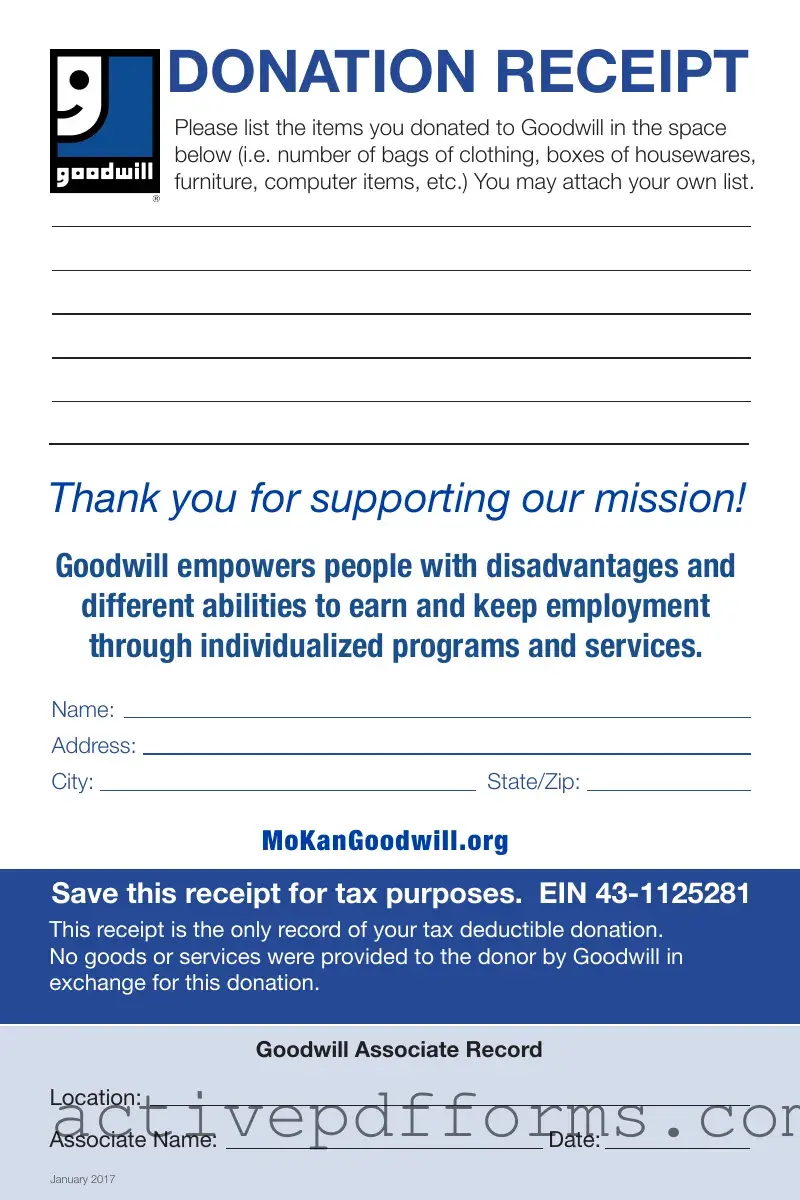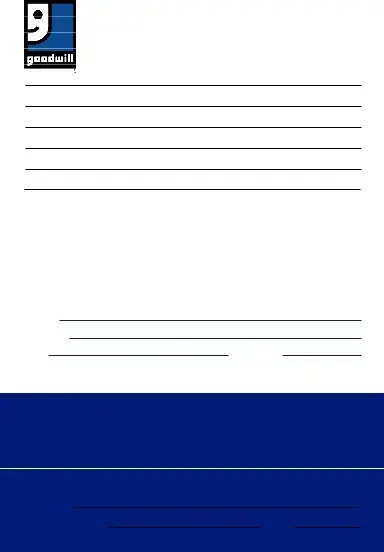Engaging in the act of donating goods to Goodwill not only grants items a second chance at usefulness but also plays an integral role in supporting Goodwill's mission to empower individuals with disadvantages and different abilities. The For Goodwill Donated Goods form is a crucial document for donors, serving as the sole record of their tax-deductible contributions, ranging from bags of clothing to furniture and computer items. This form underscores Goodwill's dedication to financial transparency, indicating that 90¢ of every dollar received is directed towards programs and services aimed at aiding job seekers in local communities. Moreover, it emphasizes the environmental benefit of donating, noting how donated items are sold in thrift stores or online, with unsold items finding potential through the Goodwill Outlet or being responsibly recycled. The form also handles administrative details such as the donor's contact information and the specifics of the donation, ensuring that Goodwill's interaction with donors is as streamlined and beneficial as possible. This approach highlights how contributions extend beyond mere material donations, fueling programs that foster employment opportunities and by extension, community prosperity. Through the donation receipt, contributors are reminded of their important role in a larger societal mission, and the tangible impacts their donations have, from providing job training and employment services to minimizing waste and supporting environmental sustainability.


